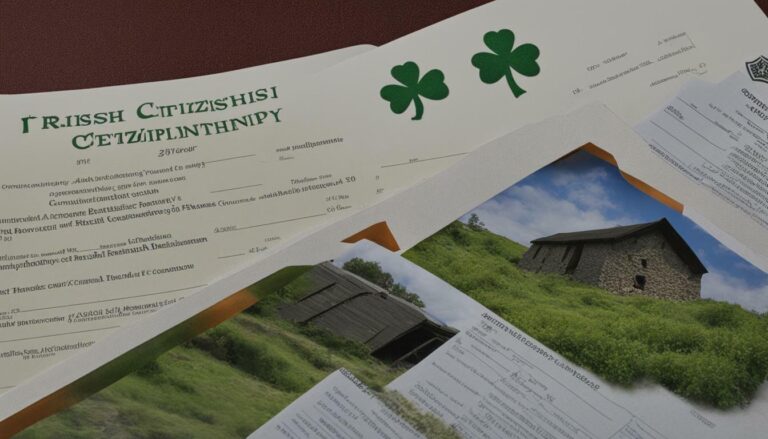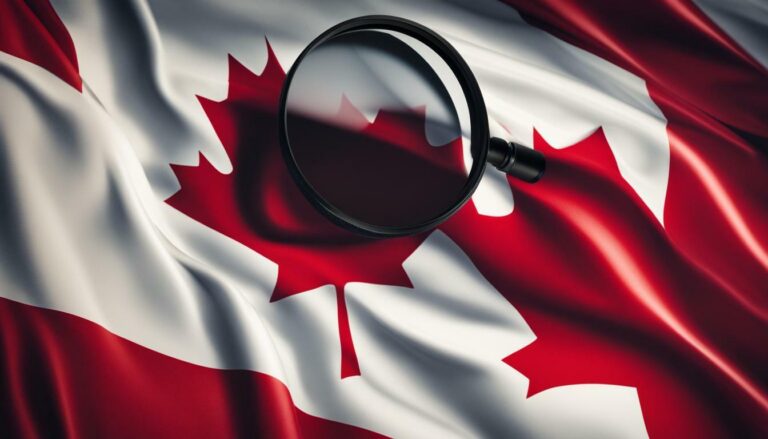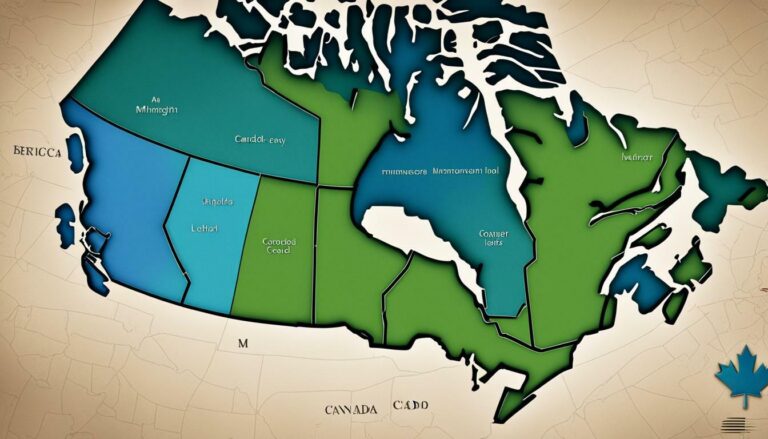Discover How Long It Takes to Get Canada PR Status
Obtaining Canada PR status is a goal for many individuals, but the time it takes to get approved can vary depending on several factors. Each application is unique and requires a different processing time. However, the estimated processing times for most applications can be found on the government of Canada’s website.
Before checking the application status, several steps need to be completed, such as submitting the application, adding it to the processing queue, and checking for completion. Once these steps are completed, an acknowledgement of receipt (AOR) letter or email with the application number is sent.
The processing time for PR cards for new permanent residents is about 45 days, while applications for renewed PR cards generally take around 104 days. It is advisable to allow ample time for the processing of PR applications as it can sometimes take several months.
If a mailing address was not provided at the time of becoming a permanent resident, it must be provided within 180 days to receive the PR card by mail. In case of any issues with the PR card, such as misspelling of the name, it is recommended to contact IRCC for reissuing.
The PR card can also be used as a travel document, but it is advisable to wait until the card is received before traveling. The valid PR card should be kept until the renewed card is received, and once received, the old card should be destroyed.
Additional help and information can be obtained from settlement agencies and the IRCC website.
Key Takeaways:
- Processing times for Canada PR status can vary for each application.
- Estimated processing times can be found on the government of Canada’s website.
- Acknowledgement of receipt (AOR) letter or email is sent after completing certain steps in the application process.
- The processing time for PR cards for new permanent residents is approximately 45 days, while the renewal process takes around 104 days.
- It is advisable to provide a mailing address within 180 days to receive the PR card by mail.
Understanding the PR Application Process
The process for obtaining Canada PR status involves several steps that applicants need to complete, and the overall duration can vary from case to case. It is important to understand these steps and factors that can affect the processing time to ensure a smooth application process.
Once the application is submitted, it goes through various stages of processing, including document verification, background checks, and medical examinations. These stages can take different lengths of time, depending on individual circumstances and the workload of the immigration authorities.
The average time for Canada PR processing is around 6 to 12 months, but it is essential to note that this is an estimate, and actual processing times may be shorter or longer. Applicants can check the government of Canada’s website for estimated processing times based on their specific program and category.
Throughout the process, it is crucial to keep track of the application status. Once the application is received and processed, an acknowledgement of receipt (AOR) letter or email is sent, which includes an application number. This number should be used to check the application status online or through the IRCC Call Centre.
Table:
| Application Type | Average Processing Time |
|---|---|
| New PR Application | 6-12 months |
| Renewal of PR Card | 45 days |
In the case of PR card processing, new permanent residents can expect a processing time of approximately 45 days, while renewals of PR cards generally take around 104 days. It is advisable to allow ample time for the processing of PR applications as it can sometimes take several months.
Applicants should also ensure that they provide a valid mailing address during the application process. If a mailing address was not provided at the time of becoming a permanent resident, it must be provided to IRCC within 180 days to receive the PR card by mail.
If any issues arise with the PR card, such as misspelling of the name, it is essential to contact IRCC for reissuing. The PR card can also be used as a travel document; however, it is advisable to wait until the card is received before traveling to avoid any inconvenience.
Once the renewed PR card is received, it is important to keep the new card and destroy the old one. The valid PR card should be kept until the renewed card is received, as it serves as proof of permanent residency status in Canada.
For additional help and information throughout the application process, applicants can seek assistance from settlement agencies or refer to the IRCC website, which provides comprehensive guidance and resources.
Checking Application Status and Acknowledgement of Receipt
After submitting the PR application, it is essential to regularly check its status to stay informed about its progress. The processing duration for Canada PR applications can vary, so staying updated is crucial. The Canadian government provides estimated processing times for most applications on their official website, which can serve as a reference point.
Once the application is submitted, it goes through several steps before the processing begins. These steps include adding the application to the processing queue and checking for completion. It is important to note that each application is unique and may have different requirements, hence the varying processing times.
Once the application has been processed, applicants receive an acknowledgement of receipt (AOR) letter or email with their application number. This letter serves as a confirmation that the application has been received and is being processed. It is advised to keep the AOR letter or email safe as it contains essential information regarding the application.
| Application Type | Average Processing Time |
|---|---|
| New PR Cards for Permanent Residents | Approximately 45 days |
| Renewal of PR Cards | Around 104 days |
The processing time for PR cards for new permanent residents is generally about 45 days. On the other hand, applications for renewing PR cards typically take around 104 days. It is advisable to allow ample time for the processing of PR applications as it can sometimes take several months. Planning accordingly will ensure a smooth process of obtaining or renewing the PR card.
If a mailing address was not provided at the time of becoming a permanent resident, it is important to provide a mailing address within 180 days to receive the PR card by mail. Ensuring a valid and correct mailing address will help avoid any delays or complications in receiving the PR card.
In case of any issues with the PR card, such as a misspelling of the name, it is recommended to contact the Immigration, Refugees and Citizenship Canada (IRCC) for reissuing. They will be able to guide applicants on the necessary steps to rectify any errors on the PR card.
It is worth noting that while the PR card can also serve as a travel document, it is advisable to wait until the card is received before making any travel plans. This will avoid any disruptions in travel or potential issues at immigration checkpoints. Once the renewed PR card is received, it is important to keep the valid card and destroy the old one to avoid any confusion.
For additional help and information regarding the Canada PR application process, applicants can reach out to settlement agencies or visit the official website of IRCC. These resources can provide valuable assistance and support throughout the application process, ensuring a smooth and successful journey towards obtaining Canada PR status.
Processing Time for PR Cards
Once approved for PR status, applicants will need to wait for the processing of their PR cards, which can take a certain amount of time. The processing time for PR cards for new permanent residents is approximately 45 days, whereas applications for renewed PR cards generally take around 104 days to be processed.
It is important to note that these processing times are only estimates and can vary depending on various factors. It is advisable to allow ample time for the processing of PR applications as it can sometimes take several months. The estimated processing times for most applications can be found on the government of Canada’s website.
If a mailing address was not provided at the time of becoming a permanent resident, it is crucial to provide one within 180 days to receive the PR card by mail. Failure to provide a mailing address within this timeframe may result in delays in receiving the PR card.
| Processing Type | Processing Time |
|---|---|
| New PR Card | Approximately 45 days |
| Renewed PR Card | Approximately 104 days |
In case of any issues with the PR card, such as a misspelling of the name, it is recommended to contact the Immigration, Refugees and Citizenship Canada (IRCC) for reissuing. The PR card can also be used as a travel document; however, it is advisable to wait until the card is received before traveling.
Once the renewed PR card is received, it is important to keep it and destroy the old card. The valid PR card should be kept until the renewed card is received, and once received, the old card should be destroyed to ensure the correct and up-to-date information is available.
For additional help and information regarding the Canada PR application process, it is recommended to reach out to settlement agencies or visit the IRCC website. These resources can provide valuable guidance and assistance throughout the application process.
Providing Mailing Address and Receiving the PR Card
It is crucial to provide a valid mailing address within a specified timeframe to ensure the timely receipt of the PR card. Once your application for permanent residency is approved, the Immigration, Refugees and Citizenship Canada (IRCC) will send your PR card to the address you provided. Therefore, it is vital to ensure that the address you provide is accurate and up to date.
If you did not provide a mailing address at the time of becoming a permanent resident, it is important to do so within 180 days. Failure to provide a mailing address within this timeframe may result in delays in receiving your PR card. To update your mailing address, you can do so online through your IRCC online account. Make sure to double-check the accuracy of the address before submitting the update.
Once your PR card is mailed, it usually takes approximately 45 days for new permanent residents to receive their PR cards. However, for those who need to renew their PR cards, the processing time is generally around 104 days. These processing times are estimates and can vary depending on various factors, such as the volume of applications received and the complexity of individual cases.
To track the status of your PR card, you can use the IRCC’s online portal or contact their customer support. It is advisable to wait until you receive your PR card before making any travel plans. Although the PR card can be used as a travel document, it is always recommended to have the physical card with you for hassle-free travel.
| Processing Time | Application Type |
|---|---|
| Approximately 45 days | New permanent residents |
| Around 104 days | Renewed PR cards |
Remember, it is crucial to ensure the accuracy of your mailing address and allow ample time for the processing of your PR application. If you encounter any issues with your PR card, such as a misspelled name, it is recommended to contact the IRCC for assistance in reissuing your card. You can also seek additional help and information from settlement agencies or visit the official IRCC website for further guidance.
Addressing Issues with the PR Card
If there are any errors or issues with the PR card, it is important to address them promptly to ensure its accuracy and validity. The PR card serves as official proof of your permanent resident status in Canada and is essential for various purposes, such as re-entering the country after traveling abroad. Here are some steps to take if you encounter any issues with your PR card:
1. Contact IRCC for assistance
If you notice any errors or discrepancies on your PR card, such as a misspelled name or incorrect personal information, it is recommended that you contact the Immigration, Refugees and Citizenship Canada (IRCC) immediately. They will guide you through the process of resolving the issue and reissuing a corrected PR card.
2. Gather supporting documents
When contacting the IRCC, be prepared to provide any necessary supporting documents related to your PR card, such as your passport, proof of address, or any other relevant identification documents. These documents will help expedite the process and ensure that your information is accurately reflected on the new PR card.
3. Follow the instructions provided
Once you have contacted the IRCC, they will provide you with specific instructions on how to proceed. It is crucial to carefully follow these instructions to ensure a smooth resolution. This may involve submitting a new application, providing additional documentation, or attending an appointment at an IRCC office.
By promptly addressing any issues with your PR card, you can help maintain its accuracy and validity, ensuring that it serves as a reliable proof of your permanent resident status in Canada. If you have any concerns or questions, it is always advisable to reach out to the IRCC for guidance and assistance.
For more detailed information and updated guidelines regarding addressing issues with the PR card, please visit the official Immigration, Refugees and Citizenship Canada (IRCC) website.
Using the PR Card as a Travel Document
The PR card can serve as a travel document for permanent residents, but it is advisable to wait until its receipt before making any travel plans. It is essential to note that the processing time for PR cards for new permanent residents is approximately 45 days, while applications for renewed PR cards generally take around 104 days. Therefore, it is crucial to allow ample time for the processing of PR applications, as it can sometimes take several months.
Once the PR card is received, it is important to keep it safe and secure. The PR card will be considered valid for travel purposes until its expiry date. However, in case of any issues with the PR card, such as a misspelling of the name or other errors, it is recommended to contact the Immigration, Refugees, and Citizenship Canada (IRCC) for reissuing. It is always better to address any issues before planning any international travel to avoid any inconvenience or delays.
If you need to travel urgently and do not have a valid PR card, it is advisable to carry other travel documents, such as a valid passport from your home country, to prove your permanent resident status when returning to Canada. It is also recommended to consult the official government of Canada website or contact IRCC for detailed information on travel requirements and documents needed for permanent residents.
| Important Information: |
|---|
| The PR card can be used as a travel document for permanent residents. |
| Wait until the PR card is received before making any travel plans. |
| If there are any issues with the PR card, contact IRCC for reissuing before traveling. |
| Carry other travel documents, such as a valid passport from your home country, if the PR card is not available. |
| Consult the official government of Canada website or contact IRCC for detailed travel requirements and documents needed. |
Keeping the PR Card and Destroying the Old One
It is essential to keep the PR card secure and destroy the old card once the renewed card is received to avoid any potential issues. The PR card serves as proof of your permanent resident status in Canada, and it is crucial to have the most up-to-date and accurate document.
When you receive your renewed PR card, carefully examine it for any errors or discrepancies, such as misspelled names or incorrect personal information. If you notice any issues, it is important to contact the Immigration, Refugees and Citizenship Canada (IRCC) promptly. They will guide you on the process of reissuing a corrected PR card.
To ensure the security of your PR card, it is advised to keep it in a safe place, such as a secure wallet or a locked drawer at home. Losing or misplacing the card can lead to significant challenges, and it’s always better to be proactive in safeguarding it. Additionally, remember that the PR card should not be laminated, as it may render it invalid.
Once you have received your new PR card, it is time to dispose of the old one. The recommended method for destroying the card is to cut it into several pieces, ensuring that all personal information, including the cardholder’s photograph and identification numbers, are irreversibly destroyed. By doing so, you can be confident that your old card will not be misused or mishandled.
| Steps | Action |
|---|---|
| 1 | Upon receiving your renewed PR card, carefully examine it for any errors or discrepancies. |
| 2 | Keep your PR card in a secure place, such as a secure wallet or a locked drawer at home. |
| 3 | In the event of any issues with the PR card, promptly contact IRCC for reissuing. |
| 4 | When disposing of the old PR card, cut it into several pieces to irreversibly destroy all personal information. |
By following these steps, you can ensure the security and validity of your PR card, as well as avoid any potential complications that may arise from holding an outdated or incorrect document. Always prioritize the safety and integrity of your PR card to maintain your permanent resident status in Canada.
Obtaining Additional Help and Information
Navigating the Canada PR application process can be complex, but there are resources available to provide guidance and support. Whether you have questions about the application timeline, processing duration, or any other aspect of the PR application, these resources can assist you in making informed decisions. Settlement agencies are one such resource, offering valuable assistance to newcomers to Canada.
Settlement agencies are nonprofit organizations that specialize in helping newcomers settle and integrate into Canadian society. They provide a range of services, including guidance on the PR application process. These agencies have knowledgeable staff who can answer your questions, provide advice, and offer support throughout the application journey.
In addition to settlement agencies, the Immigration, Refugees and Citizenship Canada (IRCC) website is a valuable source of information. It contains a wealth of resources, including step-by-step guides, FAQs, and processing time estimates. It is recommended to visit the IRCC website regularly to stay updated on any changes to the PR application process.
Online forums and discussion boards
Online forums and discussion boards can also be helpful in obtaining additional help and information. These platforms allow you to connect with other individuals who are going through the same process or have already successfully obtained PR status. Sharing experiences, asking questions, and receiving advice from fellow applicants can provide valuable insights and support.
In summary, don’t hesitate to reach out to settlement agencies, explore the IRCC website, and engage with online forums to obtain the assistance and information you need during your Canada PR application. Remember that each application is unique, and seeking guidance can help you navigate the process more smoothly.
Understanding Estimated Processing Times
The government of Canada provides estimated processing times for different types of PR applications, which can give applicants an idea of how long they may need to wait. These processing times are based on historical data and are meant to provide a general timeframe rather than an exact timeline. It’s important to note that these estimates are subject to change and can vary depending on various factors.
It’s also important to keep in mind that each application is unique, and the processing time can be influenced by factors such as the volume of applications received, the complexity of the case, and the accuracy and completeness of the submitted documentation. Therefore, while the estimated processing times can serve as a helpful guideline, it’s crucial to be patient throughout the process.
Factors Affecting Processing Time
Several factors can impact the processing time of Canada PR applications. These factors include the specific immigration program through which the applicant is applying, the current processing capacity of the immigration authorities, and any additional security checks or verifications that may be required.
It’s worth noting that some immigration programs may have faster processing times compared to others. For example, certain skilled worker programs may have shorter processing times due to their streamlined processes and high demand for skilled workers in specific industries.
Additionally, changes in immigration policies or the introduction of new application requirements can also affect processing times. It’s important to stay up to date with the latest information from the government of Canada and consult the official resources to ensure accurate and timely submission of the PR application.
| Program | Estimated Processing Time |
|---|---|
| Express Entry | 6 months |
| Provincial Nominee Program (PNP) | 15-19 months |
| Canadian Experience Class (CEC) | 6 months |
| Family Sponsorship | 12-24 months |
These estimated processing times can provide a general idea of how long it may take to obtain Canada PR status, but it’s important to remember that individual cases may vary. Patience and understanding are key during this process, and applicants are encouraged to consult the official government resources and seek assistance from settlement agencies if needed.
Factors Affecting Processing Time
Various factors, such as the type of application and the completeness of supporting documents, can influence the overall processing time for Canada PR. Understanding these factors can help applicants manage their expectations and navigate the process more effectively.
One important factor is the type of application being submitted. Different categories, such as federal skilled worker, provincial nominee, or family sponsorship, may have different processing times. It is important to research and understand the specific requirements and processing times for the chosen category.
The completeness of supporting documents is also crucial. Incomplete or missing documents can significantly delay the processing time. Applicants should thoroughly review the application checklist provided by the government of Canada and ensure that all required documents are included.
Other factors that can affect processing time include the volume of applications received, seasonal variations, and unforeseen circumstances. High volumes of applications or peak periods, such as the end of the year, can lead to longer processing times. Additionally, unexpected events, such as changes in immigration policies or global emergencies, may impact processing times.
| Factor | Description |
|---|---|
| Type of Application | Different categories may have different processing times |
| Completeness of Supporting Documents | Incomplete or missing documents can cause delays |
| Volume of Applications | High volumes of applications can lead to longer processing times |
| Seasonal Variations | Peak periods may result in extended processing times |
| Unforeseen Circumstances | Changes in immigration policies or emergencies may impact processing times |
It is important to note that the estimated processing times provided by the government of Canada are just estimates and can vary based on individual circumstances. Factors such as a complex application or the need for additional documentation may result in longer processing times. Applicants should regularly check the application status online and follow any instructions provided by the Immigration, Refugees and Citizenship Canada (IRCC).
By understanding the various factors that can affect processing time, applicants can better plan and prepare for their Canada PR journey. Patience and diligence are key when awaiting a decision, as the process can sometimes take several months. It is advisable to stay informed, seek assistance if needed, and monitor any updates to ensure a smooth and successful application process.
Conclusion
Obtaining Canada PR status is a significant achievement, and while the processing time may vary, it is crucial to remain patient and follow the necessary steps to ensure a successful application.
The government of Canada provides estimated processing times for most PR applications on their official website. These estimates can give applicants an idea of how long the process may take, but it is important to remember that each application is unique and may have different processing times.
Before checking the status of their application, applicants must complete several steps, including submitting the application, adding it to the processing queue, and waiting for it to be processed. Once these steps are completed, an acknowledgement of receipt (AOR) letter or email with the application number will be sent.
The processing time for PR cards for new permanent residents is typically around 45 days, while applications for renewed PR cards generally take approximately 104 days. It is advisable to allow ample time for the processing of PR applications as it can sometimes take several months.
If a mailing address was not provided at the time of becoming a permanent resident, it must be provided within 180 days to receive the PR card by mail. In case of any issues with the PR card, such as a misspelling of the name, it is recommended to contact the Immigration, Refugees and Citizenship Canada (IRCC) for reissuing.
The PR card can also be used as a travel document; however, it is advisable to wait until the card is received before traveling. Once the renewed PR card is received, the old card should be destroyed, and the new card should be kept as a valid proof of permanent residency.
For additional help and information, applicants can seek assistance from settlement agencies and refer to the IRCC website. These resources can provide valuable guidance throughout the Canada PR application process.
FAQ
Q: How long does it take to get Canada PR status?
A: The processing time for obtaining Canada PR status can vary for each application. It is recommended to check the estimated processing times on the government of Canada’s website.
Q: What are the steps involved in the PR application process?
A: The PR application process includes submitting the application, adding it to the processing queue, and checking for completion. Once these steps are completed, an acknowledgement of receipt (AOR) letter or email with the application number is sent.
Q: How long does it take to receive a PR card for new permanent residents?
A: The processing time for PR cards for new permanent residents is approximately 45 days.
Q: How long does it take to renew a PR card?
A: Renewal applications for PR cards generally take around 104 days to process.
Q: What should I do if I did not provide a mailing address at the time of becoming a permanent resident?
A: If a mailing address was not provided, it must be provided within 180 days to receive the PR card by mail.
Q: What should I do if there are issues with my PR card, such as a misspelled name?
A: In case of any issues with the PR card, it is recommended to contact IRCC for reissuing.
Q: Can I use the PR card as a travel document?
A: Yes, the PR card can be used as a travel document. However, it is advisable to wait until the card is received before traveling.
Q: What should I do with my old PR card once I receive the renewed card?
A: It is important to keep the valid PR card until the renewed card is received. Once received, the old card should be destroyed.
Q: Where can I find additional help and information regarding the Canada PR application process?
A: Additional help and information can be obtained from settlement agencies and the IRCC website.
Source Links
- https://www.cic.gc.ca/english/helpcentre/answer.asp?qnum=031&top=3
- https://settlement.org/ontario/immigration-citizenship/permanent-residence/permanent-resident-pr-status/frequently-asked-questions-about-the-permanent-resident-card/
- https://www.cic.gc.ca/english/helpcentre/answer.asp?qnum=1494&top=3







